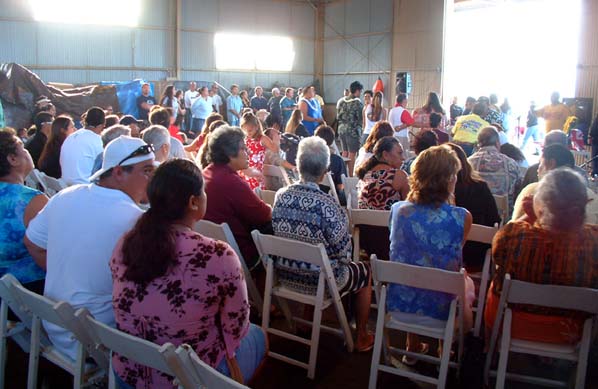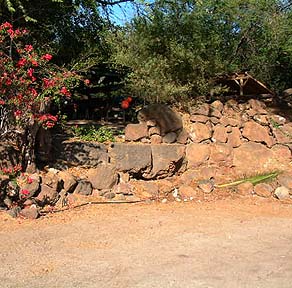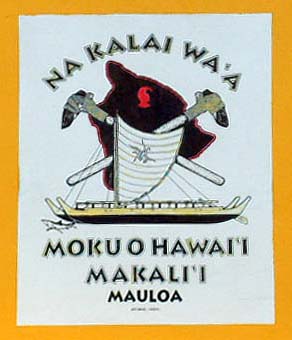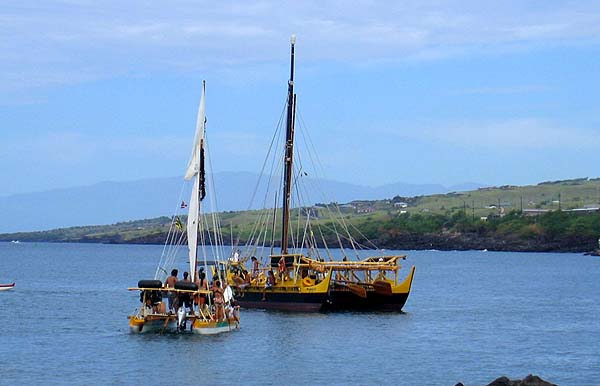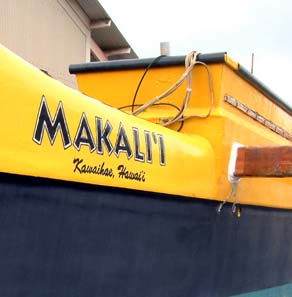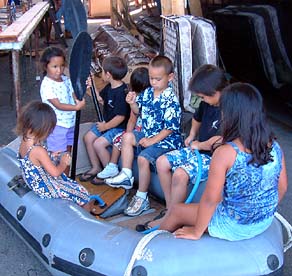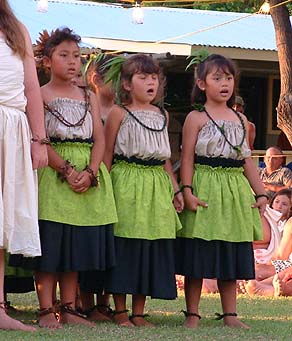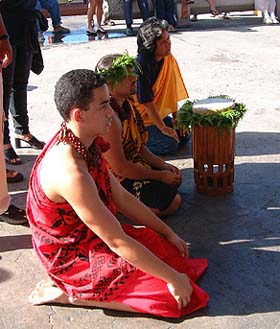 |
 |
 |
|||||
|
|
|||||||
|
|
|
|
|
“Back in the old times, we had a really strong sense of community,” Pua remarks. “Now it’s separated. Everybody has their own thing. Everybody wants this and everybody wants that and nobody wants to come together, and make it work. ‘I want this, I want a park,’ somebody else wants this and everybody want, want, want, but nobody wants to do what it takes to make it happen. So, I say, that during my time of growing up, we were as one community and one family. Not today. Today, it’s divided."
|
||
|
|
||
“That’s because of the new people coming in. Because you get new people come in with new ideas. They will not accept your ideas, although you’ve been here a long time, and you know what works and what doesn’t. Because they have such strong minds and they want to do what they think is righ, we go head on, we lock horns. We try to make everything workable so that everybody is agreeable, but it doesn’t happen that way." “As far as I’m concerned the only community I know is my auntie next door, me, my cousin up the road and this one up here,” Ku‘ulei points out. “That’s my community to me, because that’s all that exists of what I knew as a community. Everybody else that’s here now, they’re new people—with new problems and new issues. We’ve been here for centuries, and we can’t even resolve our problems. We’re fighting just to stay here every day."
|
|
|
"What’s made a new community is Hawaiian Homelands, the new Hawaiian Homes development up the road. It’s all the Hawaiians that should have had houses years ago, and finally it’s their grandkids that got the houses. “As the blood quantum is set now, I have one daughter that can inherit Hawaiian Homes Land from me, because she has a little more Hawaiian blood than my other kids. My younger kids, their dad’s haole so there’s no way they can get, unless the blood quantum changes by the time I die. "We are working towards dropping the blood quantum so that our children can inherit. Because what’s going on now is not fair; they’re going to kill us off and then they won’t have to pay anything. So I hope before that happens, they at least let our children have what we have. They deserve that. "But the new Hawaiian Homes development, I think that’s pretty much the community that helped build the Makali‘i."
|
|
|
|
|
“The Makali‘i is a prime example that when a community gets together and has a specific purpose,” Ku explains, “and pools their strength for that purpose—a process that we call kukulu kumuhana in Hawaiian [to pool thoughts and prayers to solving common problems]—then really phenomenal things can happen. "And I think the creation of the Makali‘i, and it’s incredible achievements with very, very limited funding and resources, points to just exactly that. When the leadership is there, but also the bind from the community and the support is there, then even though the systemic support may be absent, things can really, really happen. The impact that the Makali‘i has had, and not just in our community but statewide, is just incredible."
|
||
|
|
||
“The incredible impact that the Makali‘i has had includes, first, the creation of more canoes, and in people being totally excited about voyaging. Especially people that are more grass roots, who come from relatively destitute communities throughout the islands. We don’t have the recognition that comes with being in areas of high visibility, where the funding is much, much easier. “And the Makali‘i, they have been awesome in allowing the entire Waimea community to share in their success. That’s the true community spirit. So it’s not like your community puts it together, then when it is successful all of a sudden only three people take credit for it; but really saying, ‘Hey, this is our community; this is how we work together.’ This a way of showing that communities can work together. And we are the role model that: if we can do it, you can do it."
|
|
Tomorrow's navigators? |
“I have no connection to the Makali‘i,” Pua points out, “nothing whatsoever. I didn’t involve myself in the Makali‘i, because I wasn’t into a lot of Hawaiiana like they are. And I didn’t want to get into something that I didn’t know anything about it anyway.” “I don’t really get involved in a lot of causes or a lot of things like that because I don’t have the energy,” Ku‘ulei concurs. “When I find something that I think is worth fighting for then I do it.” “It didn’t pull people together in this community,” Pua continues. “Maybe up in Waimea, but not in this community, no. But whatever they did and however they did it, was O.K. for us. "And of course when I see the Makali‘i out there going, I go ‘Oh, here comes the Makali‘i!’ To watch it sail by, it feels good. And to know that a lot of our children are on there and they are learning about how to do this and that and whatever the teachings are on board, it’s fine. For their own benefit."
|
“During our days, we didn’t have that kind of opportunity, and some times you need to do that, because some kids today, school is not for them. They would rather stay home and do other things than go to classes. But I think going on the Makali‘i or something that where you take the children away from class and put them into something that they’re interested, I think that is worth trying. “The Makali‘i did do good,” Ku‘ulei agrees, “it did good for the kids that went to school there and learned how sail and all that. But as far as my community, this community here, it didn’t involve us at all. We did that as kids. That was a way of life for us, and it was work, hard work. As you get older you try not to do those things, you try to do better things. I love the ocean but it’s also hard, hard work. But if you want to go for it, go for it. “I’ve gone to see the Makali‘i when they came in, and I show my kids, it’s interesting. And it’s nice looking at it when it’s sailing out there in the ocean. Beautiful.”
|
|
|
|
|
“At Kanu o ka ‘Aina,” Ku states, “we really feel that we are working hard to empower the native community, and to establish a place that is not just reacting to negative change that seems to crowd us out, but to be really instrumental in creating positive change that helps us. We could become a model of what can happen when work together. “The great thing about being a public school is that we cannot discriminate who comes to the school, and it really, really helps us from falling into the trap of becoming racist or ethno-centric, which can happen very easily. Because our school is open to everybody who wants to perpetuate Hawaiian language and traditions, we have non-Hawaiians who feel very strongly about that and then we also know Hawaiians for whom that’s not in their list of priorities, and therefore this is not a school for them.”
|
||
|
|
||
| “We feel that kids need to be bi-lingual and bi-cultural and so our program is bi-lingual and bi-cultural. And besides being bi-lingual and bi-cultural, where we really pride ourselves is in preparing the students to walk comfortably in both worlds. That is emphasized throughout everything in Kanu o Ka ‘Aina. You can be comfortable in shorts and tank top and slippers just like people from a public school, or just like the kids the Hawaiian language immersion program. "But when it becomes time to put on your malo, you have no problem with that, and when it comes time to put on a fancy suit, that you also have no problem to do that. We want the kids to be as comfortable in the taro patches as they are, say, designing a website on the computer."
|
|
|
“Everybody that comes to Kanu, whether it’s students or staff, has to make a commitment to perpetuate Hawaiian language and cultural traditions, and to try their hardest in all of that because that’s the important Hawaiian value. "But that core Hawaiian attitude and way of life does not mean we’re anti- anybody else. And I think that’s been a misperception for many people. Whenever we say we’re doing something that is pro-Hawaiian, the implication is that it’s anti-Japanese, anti-hoale, anti-American, anti-whatever, and I think that’s really sad. Just because because you’re pro-Hawaiian does not mean you have to be anti-anybody else.”
|
|
|
|
More about cultural preservation and education for the future in Kawaihae is considered in the next page, Replanting.
|
||
|
|
||
|
|
|
|
|
|

|
| Kawaihae Home | Map Library | Site Map | Hawaiian Islands Home | Pacific Worlds Home |
|
|
|
|
|
|
|||
| Copyright 2006 Pacific Worlds & Associates • Usage Policy • Webmaster |
|||
